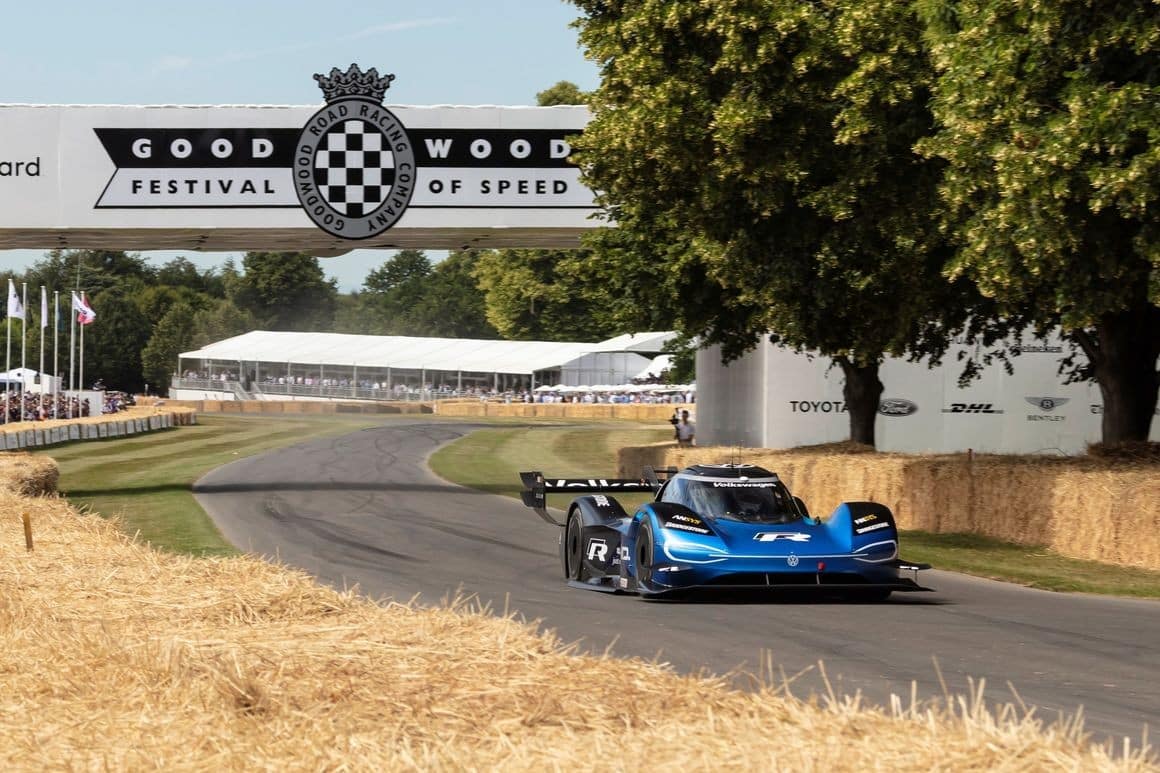
Every year since 1993, the Goodwood Festival of Speed has attracted around 180,000 spectators from all over the world. The fans who made their way to West Sussex, England in 2019 were witnesses to a new record for the Hill Climb classic. For the first time, an electric racing car was faster than a Formula 1 car.
In 1999, Formula 1 test driver Nick Heidfeld also took part in the race. In his 574 kW (780 hp) McLaren-Mercedes MP4/13 he covered the 1.86-kilometer uphill course with its nine turns in 41.6 seconds. A record time that remained unrivaled for 20 years. In 2019, three-time Le Mans winner Romain Dumas beat this best time by 1.7 seconds and wrote motorsport history. Dumas crossed the finish line in a 500 kW (680 hp) electrically powered Volkswagen ID.R in 39.9 seconds. On Sunday, the Frenchman was also the fastest driver during the “Sunday Shootout”.

“I am very proud to have set the all-time record in Goodwood with the ID.R. The short hill climb is a very special challenge,” said the 41-year-old, who was the overall winner as early as 2018 and had already set the best time for electric cars. “Because the track is so short, I could not afford to make even the slightest mistake, and every aspect of the fine-tuning of the ID.R had to be perfect. That was particularly challenging, as we were not able to test the route beforehand.”
Third record in a row
In June last year, Dumas had been already crowned a winner at the legendary Pikes Peak International Hill Climb in Colorado after he pulverized the track record his compatriot Sébastien Loeb had set in 2013. In June 2019, Dumas ran the 20.8-kilometer Nürburgring-Nordschleife laps in an ID.R with two electric motors in 6:05.336 minutes – faster than any other electric vehicle had ever done.
Volkswagen Motorsport specifically modified the ID.R for the Goodwood Festival of Speed. Due to the short distance, a smaller battery could be installed and the total weight of the car was reduced to less than 1,000 kilograms. “We used a smaller battery than at Nürburgring and optimized the power output,” said François-Xavier Demaison, Technical Director at Volkswagen Motorsport. “As such, the new sprint version of the ID.R weighs less than 1,000 kilograms, with the driver aboard.”
In addition, the drag reduction system (DRS) designed for the high-speed sections of Nürburgring had been dropped for the record drive in Great Britain. Due to the track characteristics in Goodwood, it was superfluous for this hill climb.

Developments from the racetrack to the road
Once again, the fans in Goodwood got a taste of the future of electro-mobility. Next year, the Volkswagen ID.3 will be the first model in the new ID family to be launched on the market. In addition, the engineers in Wolfsburg are working on further variants of the purely electrically driven series with the ID.3 models BUZZ and ID. VIZZION.
However, Volkswagen is not the only carmaker to test electric mobility on the race track and then go ahead and incorporate the findings from the world of sport into series production. Renault, Audi, Venturi, Jaguar, Mahindra, Mercedes, Nissan, and BMW are all competing in Formula E. Porsche holds the record for the fastest lap on the Formula 1 circuit at Spa with the 919 Hybrid Evo.
More on the topic:
Formula E: From “Nonstarter” to Crowd-Puller
Formula E Technology: From The Racetrack To The Road

